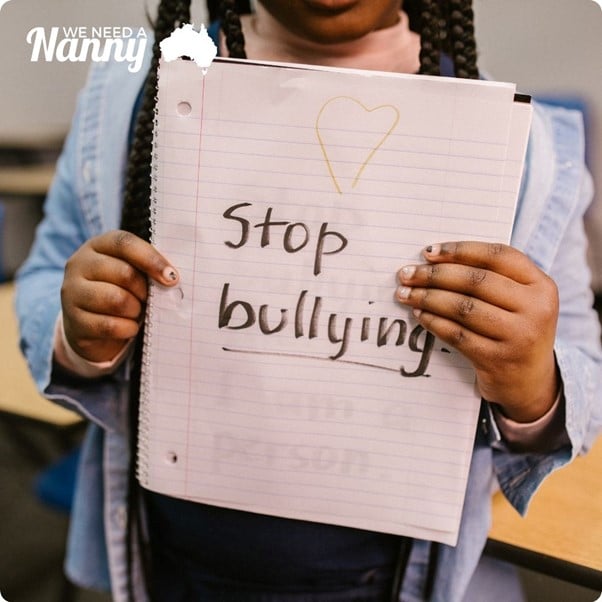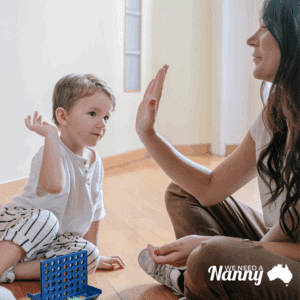The consequences of bullying during childhood can range from immediate distress to possible long-term emotional problems.
In most cases, bullying is a kind of behaviour that involves intent to hurt another, either physically or emotionally, and may be distressing and give rise to serious anxiety and depression in children.
If your child tells you about bullying, listen to them and reassure them that they are believed, while discussing possible ways of solving the problem together. Teaching your child how to respond to bullying empowers them, strengthens their resilience and supports their emotional growth.
Understanding Bullying
When your child reports an incident of bullying, it will be important to take their feelings seriously, as this can be quite a significant experience. Listen carefully and be empathetic. Be cautious not to appear shocked, or angry, or to make a quick journey to the school or the parents of the bully because this may close down your child’s talking. You can assure them with your calm and measured responses that they are safe to talk about what happened.
There are many facets of bullying to understand as a parent.
Definition of Bullying
Bullying is defined as the repeated use of deliberate words or actions aimed at causing hurt to a person and putting their well-being in jeopardy. It may be evident in schools, homes, workplaces or online platforms, and it can also be in various forms, such as physical, verbal, emotional, or cyberbullying. The impact of bullying is deep, causing severe emotional pain and distress to the victim. This is a major concern, as it affects not only those being bullied but also the surrounding society, hence needing collective action in terms of addressing and preventing such acts.
What is Bullying?
You will usually notice the following consistencies when bullying is serious:
- When there is a power difference, usually someone in a position of power, whether physical strength, popularity or a higher grade, that is directed at a person less powerful or popular.
- When the intent is to cause harm either physically or verbally, such as spreading rumours, making threats, or purposefully excluding someone.
- When it is repetitive, or has an ongoing pattern of hostile or abusive action directed to the target child.
- When it causes physical or emotional harm to the person on the receiving end, affecting their health or normal functioning.
Types of Bullying Behaviour
There are many forms of bullying, and not all incidents of bullying may fall under one category, as many of the definitions can overlap. Bullying can be defined in various ways and can sometimes fit into more than one category. Understanding these differences better prepares you and your children to handle the various types of situations they will find themselves in.
How Does Bullying Affect Children
Bullying can affect children and teenagers in many ways:
- Self-Esteem – Children who are bullied often have poor self-esteem, they feel bad about who they are and lack confidence.
- Physical Health – Often children being bullied may have visible signs of physical harm, or they may feel ill, have trouble sleeping, and lose their appetite.
- Emotional Health – Bullied children may feel sad, anxious, stressed or depressed. Sometimes they may even have outbursts of anger or frustration.
- Social Well-Being – Many children who are bullied tend to withdraw from others and avoid social settings. They feel isolated, lonely and excluded.
- Academic Achievements – Children who are being bullied may refuse to go to school, be less engaged in homework, class and school activities, have less interest in class, and their grades can suffer.
What are Some of the Signs of Bullying?
Parents, caregivers and educators alike must be knowledgeable about the behaviours and accompanying emotional cues that will indicate a child is being bullied. Since bullying is essentially about relationships, adults have to pay close attention to the dynamics in children’s social relationships. Indicators include the fact that most victimised children lack supportive relationships that promote identity, empowerment, and independence.
Changes in Behavior and Emotional Signs
- Avoiding certain individuals or groups at school or extracurricular activities.
- Poor grades or a decrease in academic performance.
- Changes in attendance and punctuality.
- Withdrawing from social and other activities.
- Changes in their friendships and social relationships.
- Feeling anxious, angry, or fearful.
- Low Self-Esteem and a lack of confidence.
- Constantly losing or forgetting things.
- Threatening to hurt themselves or others.
- Appearing unhappy in certain situations.
- Appearing isolated from social groups.
Physical Signs
- Unexplained or poorly explained bruises or injuries.
- Struggling to fall asleep, trouble sleeping or oversleeping.
- Poor appetite or always hungry.
- Headaches or stomach aches.
- Having frequent nightmares.
- Damaged clothing or other items.
Social Signs
- Lonely and isolated at school or social events.
- Struggling with friendships.
- Lack of interest in activities and social events.
- Unresponsive when asked questions or in a group.
How to Identify Bullying in Younger Children
Bullying among children in primary school generally takes the form of name-calling, exclusion, and physical behaviours such as pushing and tripping. Since younger children mostly communicate through their actions, changes in behaviour are the most overt signs of bullying in young children. The nature of bullying behaviour can change in a very short time. Children can sometimes be victims of bullying one day, and then engage in bullying behaviour the next day.
Be aware of changes your child may go through with their behaviour, mood, or state. Approach them with curious questions like “How was your day?” or “Who did you have lunch with?”.
Also, keep in touch with teachers and caregivers to express your concerns, asking about how your child interacts with classmates.
A few examples of signs to look for include:
- Regression in their developmental milestones.
- Changes in eating or sleeping patterns.
- Sudden mood swings.
- Sudden fear or anxiety.
- Stomach aches, headaches or feeling ill.
- Bruises or injuries.
- Avoiding school and social interaction.
- Frequently losing their toys or clothes.
- A more “clingy” attachment to a certain parent or nanny.
Talking to Your Child About Bullying
Open conversations about bullying with your child are critical for their well-being. Talking through their experiences and feelings helps them understand what bullying might look or sound like, in terms of physical, emotional, and social dynamics. Encourage your child to talk about incidents they witness or experience, or incidents they hear about from others. Reassure them that seeking help from a trusted adult, including teachers or family members, is always an option. This dialogue not only empowers your child but also creates a supportive environment for resilience and social skills to develop in children, which will help make their school a safer place.
Creating a Safe Space
Engage your child in a conversation about their experiences in a warm and safe environment. Let them express their concerns and feelings openly while you listen to them very carefully without any criticism.
Assure them that they are not alone. This will help your child face situations with strength and resilience.
Asking the Right Questions
Ask your child about their school experience and ask if they have encountered bullying themselves or have witnessed such an act against other kids. Such a conversation helps point out concerning behaviour and opens up a safe environment for children to talk about their feelings and concerns.
Ask them to tell you how they observe bullying, including those instances when other children, students or peers have been at the receiving end. This helps gauge their awareness about bullying and develops their empathy and understanding of bullying’s effects.
Ask your child about their feelings regarding the bullying incidents. Questions such as: what happened, or what they saw, whether they feel sad, confused, or angry. It will help you in giving all the support and guidance to your child, which is necessary for helping them to respond to bullying and to foster a more inclusive school environment.
What to Do If Your Child Is Being Bullied
Limit Your Reactions
When a child informs their parent about being bullied, it can cause a real surge in emotions, such as anger, frustration, and an urge to act right away. For instance, if your son says something like, “Hey, Mum, this new kid is picking on me,” your first instinct could be to call the other boy’s parents or the school straight away. But this response can cause your son to back away since he wants help but doesn’t want to exacerbate the situation.
Your reactions to bullying will make quite a big difference in whether your children will be more open to you now and in the future. The more emotive your reaction, the less likely kids are to discuss any issues for fear of overreactions from their parents. If you remain calm, it will ensure the opening of channels where kids share experiences and may be in a position to come for advice or support without feeling judged.
Communicate and Express Your Feelings
The more you share your feelings openly, the more comfortable your children will be to do the same. By talking about experiences from your childhood or even sharing with them the challenges and emotions you are facing today, you are reassuring your child that it is normal to experience any emotions. This will not only build a sense of understanding and empathy but also ensure that your children know they can come to you with issues troubling them. However, after you have established this open line of communication, an important next step is providing your children with the ways to handle bullying situations as they occur in schools.
Teaching Your Child How to Deal with Bullying
Parents play a crucial role in helping children through bullying.
Here are some methods that kids can use to deal with bullying:
- Report it to an Adult – Encourage your child to immediately tell a teacher, parent, or school principal or trusted adult if they are feeling unsafe or bullied.
- Use the Buddy System – Encourage your child to get a friend at school or on the bus, especially in areas where the bully is likely to be, and they could also offer to do the same for a friend.
- Stay Strong — Encourage your child to act bravely and firmly. They can tell the bully to stop bullying them and walk away.
- Talk About It – The child should talk to someone that a person they trust, such as a parent, counsellor, nanny or teacher. These individuals may offer helpful suggestions to make them feel less alone.
Build Your Child’s Confidence
Bullying can be damaging to a child’s self-esteem. Encouraging them to take part in activities with friends that build up their confidence can help. Try to get them involved in social clubs, sports, hobbies and other fun activities to help build resiliency and friendships.
Be ready to listen at times of crisis. Similarly, provide opportunities for them to share positive moments throughout their days. Remember, open communication should be integrated into daily life with your child. Children must be confident knowing they have a parent who supports and believes in them to get through bullying and, if it happens, with the determination to make it stop.
Reporting Incidents to the Child’s Teacher
If bullying is occurring at school, it is important to report the incidents to the child’s teacher or headmaster if necessary. You must inform the teacher about the bullying incidents, providing as much detail as possible about the incidents. Make sure that you stay informed about any actions the teacher or school is taking to address the incidents.
Documenting Incidents
It is also vital to document each incident of bullying by recording the date, time, and details of what happened. Take photos of any physical injuries, such as bruises or torn clothes. Save all emails, texts and social media messages that act out incidents of bullying. Documenting serves as evidence of bullying occurring, which may be necessary when reporting such an incident to the school or authorities and parents of the bully.
Getting Help and Support
School Resources
You can talk to your child’s teacher or a school counsellor to guide you on bullying. Also, make sure to ask about the school’s bullying prevention policies and procedures. Teachers may have advice on what support services are available for your child.
Community Resources
There are local organisations that provide professional support for adults and children being bullied. Similarly, you can look for resources online, such as support groups for parents and children. It may also be necessary to seek professional help from a therapist or a counsellor.
Conclusion
Bullying is an issue that affects everyone, from victims to bystanders. Knowing the signs of bullying enables you to act beforehand and safeguard your children so they can grow and develop in a supportive environment.
Recap of Steps in Preventing Bullying
- Teach your child to recognise bullying and to report it.
- Encourage your child with positive methods to address bullying and avoid and avert bullying.
- Encourage your child to stand up and speak up for themselves and other students who are being bullied.
- Model positive behaviour as a parent or caregiver to encourage your child to treat others with respect and kindness.





